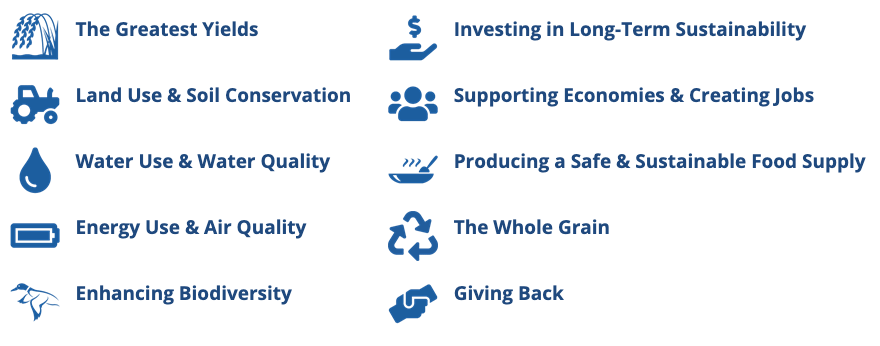U.S. Rice Fields Provide Essential Wildlife Habitats
Many wildlife species rely on the wetland habitat created by American rice farmers. This makes rice a unique working-lands crop.
Winter-flooded rice fields provide food and foraging habitat for migratory and wintering fowl. In fact, all major rice-production areas in the United States correspond to important areas of waterfowl activity during winter months.
In the regions where rice is grown in the U.S., rice agriculture provides 35% of the food resources available to migrating and wintering dabbling ducks.
The cost of replacing existing rice habitat with managed natural wetlands is more than $3.5 billion.
The U.S. rice industry’s commitment to sustainability dates back generations, long before the word “sustainability” became a popular, if difficult to define, term.
The Rice Foundation commissioned this rice industry sustainability report to collect in one place the outstanding accomplishments of the past 36 years across the three pillars of sustainability (environmental, economic, and social) including key environmental resource markers: land use and soil conservation; water use and quality; energy use and air quality; and biodiversity.


The U.S. rice industry is proud to supply a wholesome and safe product to many customers worldwide, produced in a responsible and sustainable way for a better future for us and the next generations.
Because we care…



